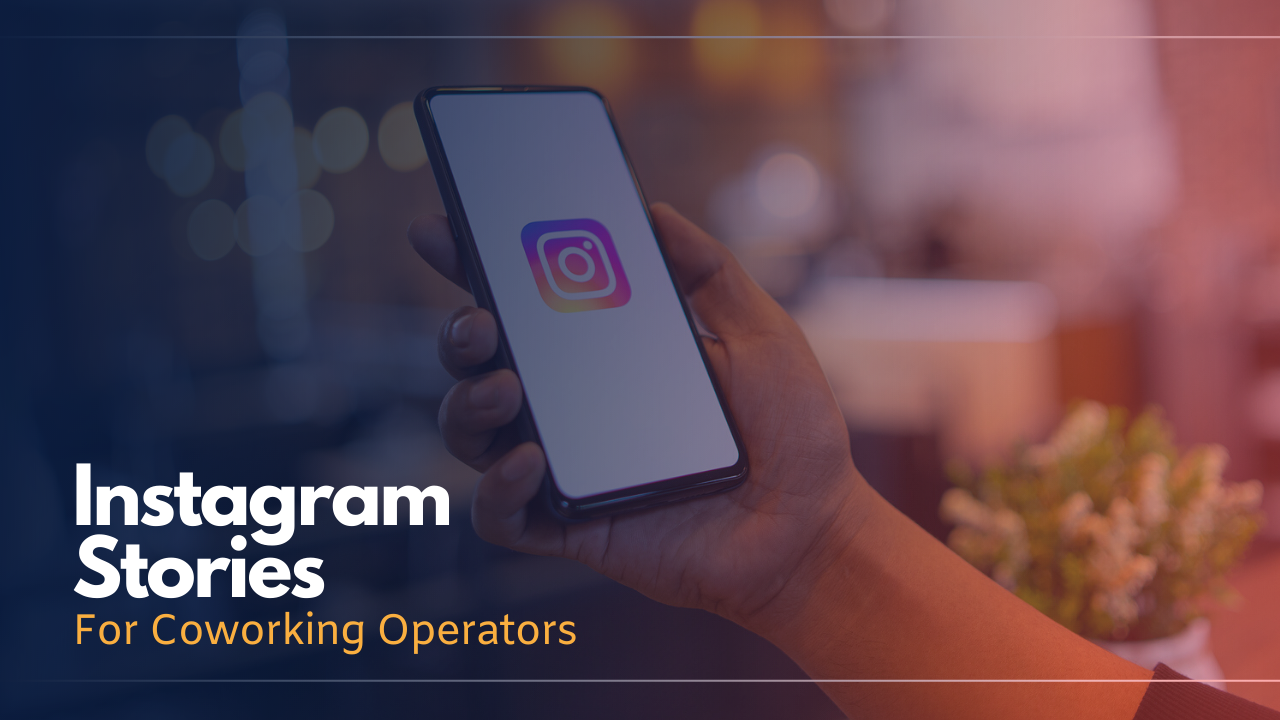- Tips and best practices on how coworking space operators can leverage Instagram Stories.
- Launched in 2016, Instagram Stories has become a highly popular tool for engaging followers.
- The channel is ideal for ‘off the cuff’ content that doesn’t need editing or polishing.
Content marketing experts, Cat Johnson and Karina Patel, recently hosted a training session on how coworking space operators can best leverage Instagram Stories to engage followers and increase their impact.
Why Instagram Stories?
Because they are “the ‘hottest and newest’ channel to reach audiences with engaging formats – short videos, boomerangs, Q&As, and polls,” Karina Patel claimed in a recent interview with Allwork.Space.
Intro to Instagram Stories for Coworking Operators
The training session began with a quick introduction on what Instagram Stories are and why businesses of all kinds should leverage this social media tool.
Instagram Stories launched in August 2016 and recent statistics estimate that more than 500 million Instagram users use stories on a daily basis. Additional data has found that since stories entered the scene, the average number of posts published on a user’s feed has declined.
Even though their life span is only 24 hours, “IG stories have risen as the perfect outlet for off the cuff content,” Patel stated during the session. Moreover, because Instagram has introduced engagement boosting features to start conversations, stories are an effective way to engage with followers.
The top benefits of using stories include:
- They are prominently displayed at the top of your followers’ feed
- They capture behind the scenes content that doesn’t have to be high resolution or highly curated
- It’s a great tool to experiment with different types of content: photos, videos, short videos, boomerangs, live video
- Stories can be used to tag other accounts, which can extend your reach
- Stories allow for users to add cool features like polls, text, hashtags, and questions, which can help boost engagement.
Best Practices for IG Stories
The training session focused on best practices when using Instagram Stories. Below are the main takeaways and tips shared by Patel during the training.
- Set up a business account. Business profiles have access to a variety of tools and functionalities that personal profiles don’t have.
- Include sound in your Stories.
- Post behind the scenes content (i.e. renovations, your community manager’s day to day, prepping for an event at your coworking space, etc.).
- Take advantage of all of Instagram Stories’ tools and features: polls, countdowns, location stamp, timestamp, gifs, filters.
- Don’t edit your Stories’ photos or videos too much.
- If you’re using filters, stick to one or two filters that align with your design strategy.
- Take advantage of stickers, particularly location and timestamp stickers as they can let viewers know where your content is coming from, as well as allow people to find your content in the explore section.
- Instagram Stories also offers a chat sticker that allows followers to start a conversation with a group of friends from your story. This is a new feature and anyone can request to join the chat, which makes it a great tool to boost engagement and hear back from your followers. The chat can be used to share new announcements, reveal information about upcoming events, or to answer frequently asked questions.
- Add music to your stories; this works particularly well for boomerangs and graphics.
- Tag other accounts if the story is about them or relevant to them. When you mention someone, their username will appear underlined in your story; people can tap on the username and they will be redirected to that profile. Pro tip: you can mention up to 10 people in each story.
- Do use hashtags; however, keep in mind that your profile has to be public for people to discover your stories in the explore section.
- The ideal dimension for stories is 1080px wide by 1920px tall. The ideal aspect ratio is 9:16.
- Design wise, keep things simple. “To tell a powerful story, simplicity is best,” Patel stated.
- Maintain a consistent theme throughout your stories; the same goes for font, filters and colors. Being consistent with design will help followers recognize your brand instantly.
- Post consistently! Patel recommends between 1 to 7 stories on a daily basis, as research has found that this is the perfect number for keeping a high completion rate (meaning that followers will see your stories from start to finish).
Final Thoughts and Measuring Success
Patel highlighted that Instagram Stories follow the privacy settings of an account, so it’s important that brands have a public profile so that users can discover them in the explore section or through other accounts.
As with any social media channel, it’s important that brands measure their efforts to see if what they’re posting is having the desired results.
Patel recommends looking at the following numbers to measure the impact of each story:
- Impressions – the total number of views your story received
- Reach – the number of unique accounts who saw your story
- Taps forward – the number of times someone tapped to skip one of your stories
- Taps back – the number of times someone tapped back to see your story again
- Replies – how many people send a message or started a conversation from seeing your story
- Swipe away – how many people swiped away to skip to another account’s stories
If you’d like more content marketing insights, check out previous training sessions from Cat Johnson here.


 Dr. Gleb Tsipursky – The Office Whisperer
Dr. Gleb Tsipursky – The Office Whisperer Nirit Cohen – WorkFutures
Nirit Cohen – WorkFutures Angela Howard – Culture Expert
Angela Howard – Culture Expert Drew Jones – Design & Innovation
Drew Jones – Design & Innovation Jonathan Price – CRE & Flex Expert
Jonathan Price – CRE & Flex Expert












